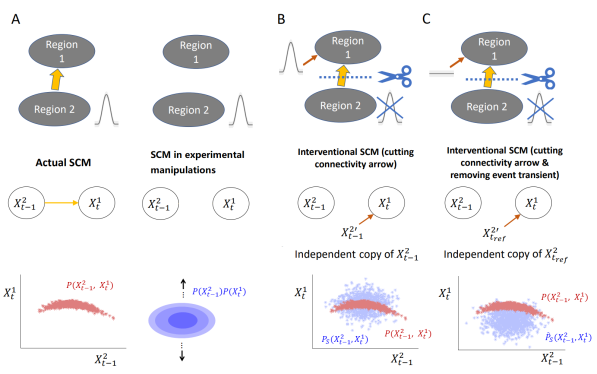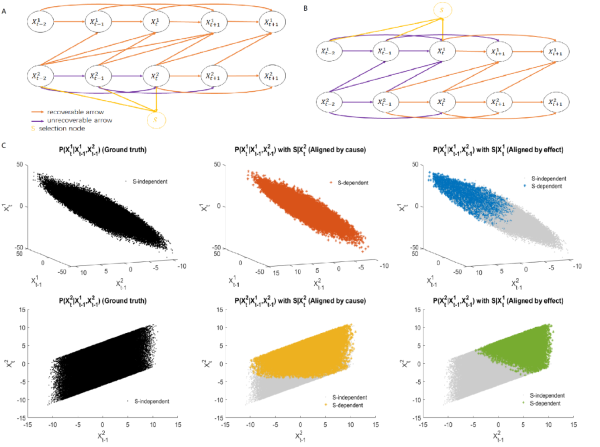On May 31, 2023, “Frontiers in Network Physiology” published a paper titled "Information theoretic measures of causal influences during transient neural events" by postdoctoral researcher Kaidi Shao, Nikos K. Logothetis, Director of ICPBR, CEBSIT, CAS, and their long-time collaborator Michel Besserve. This research, providing further insights into data-driven causal investigation of brain mechanisms, is a joint effort with the Department of Empirical Inference at the Max-Planck Institute for Intelligent Systems in Tuebingen and the Max-Planck Institute for Biological Cybernetics. This work also received support from Shanghai Municipal Government.
The paper delves into the intricacies of causal interactions during transient brain events – critical for understanding the brain's emergent properties - and highlights the limitations of existing causality measures in such scenarios. As illustrated in Figure 1, information-theoretic causality measures seek to emulate experimental manipulations by reconstructing an interventional distribution, then contrasting it with the actual condition. The authors demonstrate that existing tools like Transfer Entropy and Dynamic Causal Strength (DCS) overlook perturbations in the causative region, leading to flawed reconstructions. To address this, they introduce a novel measure, the relative Dynamic Causal Strength (rDCS).
Furthermore, the authors also showcased the theoretical biases from misaligned transient events in causal inference (Figure 2). Misalignments can skew peri-event data distributions, making many conditionals unrecoverable. They further proposed to use putative cause alignment, leveraging a conditional that is ensured to be recoverable under these circumstances (Figure 2, upper middle).
The benefits of rDCS and putative cause alignment are demonstrated through both theoretical foundations and empirical data. In a simulation experiment with deterministic perturbations, rDCS reflects transient changes while TE and DCS only characterize chronic causal interactions. With real data the authors have demonstrated that putative cause alignment is able to identify the ground-truth causal directions between Sharp Wave-Ripples in two uni-directionally connected hippocampal regions. For detail, one could refer to the original paper.
Altogether, this research proposes a reliable new way to study causal network mechanisms during transient neural activities, as well as provides deep insights about problems during the analysis of transient dynamics.
Figure 1. Analysis of event-related causality via interventions in Structural Causal Models (SCMs). (A) (top)Two brain regions with uni-directional connectivity and the manipulated scenario where the connectivity is removed. Region 2 transiently influence Region 1 during an event. (middle) SCMs underlying the diagram. (bottom) actual joint distribution reflecting dependencies between two nodes and a hypothetical Gaussian joint distribution (control condition). (B-C) Comparison of experimental manipulations underlying DCS and the proposed rDCS (top); the corresponding intervention of the SCM (middle) and the resulting joint distribution (bottom).
Figure 1:

Figure 2:

Link:https://www.frontiersin.org/articles/10.3389/fnetp.2023.1085347/abstract